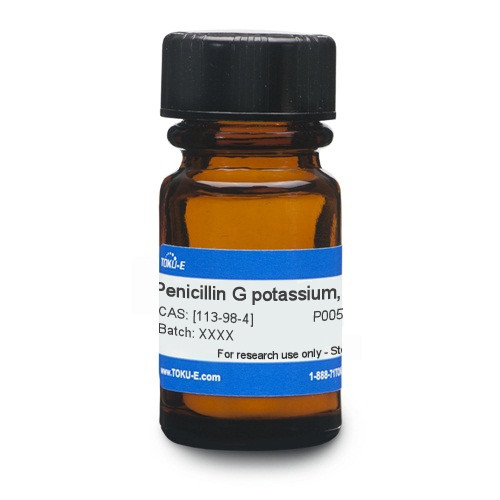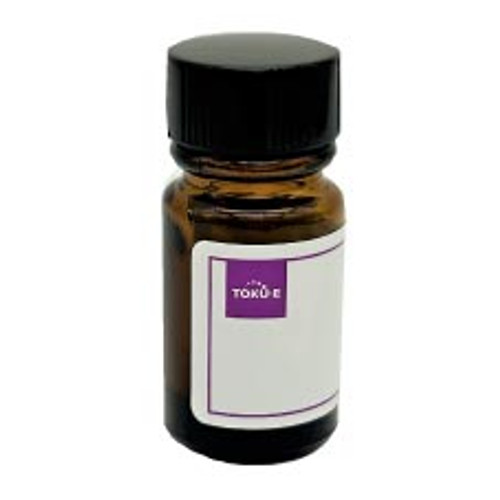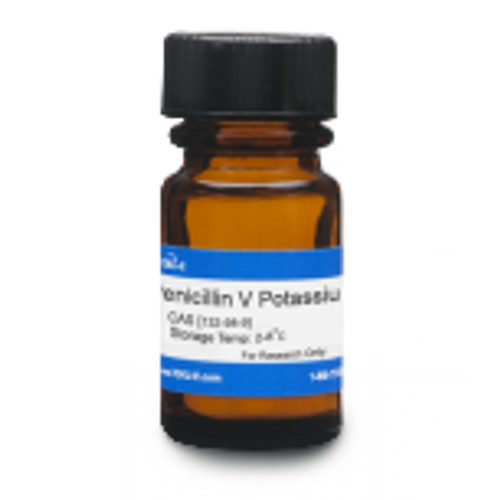-
Detailed Description
CAS Number: 113-98-4
Molecular Formula: C16H17KN2O4S
Molecular Weight: 372.49
Mechanism of Action: β-lactams interfere with PBP (penicillin binding protein) activity involved in the final phase of peptidoglycan synthesis. PBP’s are enzymes which catalyze a pentaglycine crosslink between alanine and lysine residues providing additional strength to the cell wall. Without a pentaglycine crosslink, the integrity of the cell wall is severely compromised and ultimately leads to cell lysis and death. Resistance to β-lactams is commonly due to cells containing plasmid encoded β-lactamases.
Storage Conditions: 2-8°C
Tariff Code: 2941.10.2000
-
Applications
Spectrum:
Penicillin is targets primarily Gram-positive bacteria including Staphylococcus and Streptococcus species.
Microbiology Applications: Penicillin is commonly used in clinical in vitro microbiological antimicrobial susceptibility tests (panels, discs, and MIC strips) against Gram-positive microbial isolates. Medical microbiologists use AST results to recommend antibiotic treatment options for infected patients. Representative MIC values include:
- Streptococcus pneumoniae 0.004 µg/mL – 0.5 µg/mL
- Streptococcus agalactiae 0.03 µg/mL – 0.06 µg/mL
- For a representative list of Penicillin MIC values, click here.
Mycoplasma Media Supplements
Penicillin can be used as a selective agent in several types of isolation media:
Mycoplasma Agar - Mycoplasma Supplement G
Mycoplasma Agar - Mycoplasma Supplement P
Plant Biology Applications: In a study by Windsor et al. (1972), Penicillin G Potassium was shown to control the bacterial plant disease clover club leaf in crimson clover using 100 – 1000 µg/mL.
-
Specifications
Form: Powder
Appearance: White or almost white crystalline powder
Source: Penicillium sp.
pH: 5.0-7.5
Assay: (On Dried Basis): 1440-1680 u/mg
Loss on Drying: Not more than 1.5%
Melting Point: 214-217°C
Identification: IR, Potassium - Passes test
-
References
References:
Guzmán, Flavio, MD (2008) Beta lactam antibiotics (penicillins and Cephalosporins) Mechanism of Action.” Med. Pharmacol. Pharmacology Corner.
Pitout JD, Sanders CC, Sanders WE Jr. Antimicrobial resistance with focus on beta-lactam resistance in Gram-negative bacilli. Am J Med 1997; 103:51
Penicillin G Potassium, USP is a member of the β-lactam antibiotics and was one of the first discovered antibiotics.
Penicillin G potassium is sparingly soluble in aqueous solution.
Click here for more Penicillin products.
CAS Number: 113-98-4
Molecular Formula: C16H17KN2O4S
Molecular Weight: 372.49
Mechanism of Action: β-lactams interfere with PBP (penicillin binding protein) activity involved in the final phase of peptidoglycan synthesis. PBP’s are enzymes which catalyze a pentaglycine crosslink between alanine and lysine residues providing additional strength to the cell wall. Without a pentaglycine crosslink, the integrity of the cell wall is severely compromised and ultimately leads to cell lysis and death. Resistance to β-lactams is commonly due to cells containing plasmid encoded β-lactamases.
Storage Conditions: 2-8°C
Tariff Code: 2941.10.2000
Spectrum:
Penicillin is targets primarily Gram-positive bacteria including Staphylococcus and Streptococcus species.
Microbiology Applications: Penicillin is commonly used in clinical in vitro microbiological antimicrobial susceptibility tests (panels, discs, and MIC strips) against Gram-positive microbial isolates. Medical microbiologists use AST results to recommend antibiotic treatment options for infected patients. Representative MIC values include:
- Streptococcus pneumoniae 0.004 µg/mL – 0.5 µg/mL
- Streptococcus agalactiae 0.03 µg/mL – 0.06 µg/mL
- For a representative list of Penicillin MIC values, click here.
Mycoplasma Media Supplements
Penicillin can be used as a selective agent in several types of isolation media:
Mycoplasma Agar - Mycoplasma Supplement G
Mycoplasma Agar - Mycoplasma Supplement P
Plant Biology Applications: In a study by Windsor et al. (1972), Penicillin G Potassium was shown to control the bacterial plant disease clover club leaf in crimson clover using 100 – 1000 µg/mL.
Form: Powder
Appearance: White or almost white crystalline powder
Source: Penicillium sp.
pH: 5.0-7.5
Assay: (On Dried Basis): 1440-1680 u/mg
Loss on Drying: Not more than 1.5%
Melting Point: 214-217°C
Identification: IR, Potassium - Passes test
References:
Guzmán, Flavio, MD (2008) Beta lactam antibiotics (penicillins and Cephalosporins) Mechanism of Action.” Med. Pharmacol. Pharmacology Corner.
Pitout JD, Sanders CC, Sanders WE Jr. Antimicrobial resistance with focus on beta-lactam resistance in Gram-negative bacilli. Am J Med 1997; 103:51








